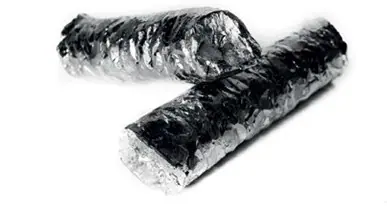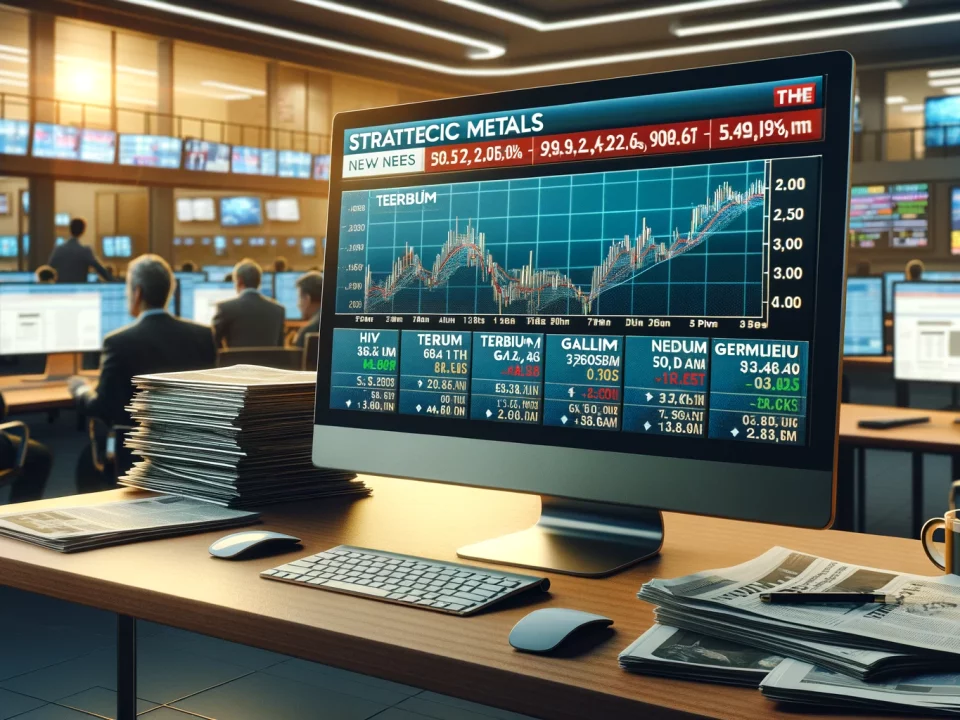
Weekly News Review September 30 – October 6 2024
October 6, 2024
Weekly News Review October 7 – October 13 2024
October 13, 2024Hafnium, a critical strategic metal, has experienced dynamic price movements over the last few years. In 2022, hafnium saw an impressive 179% price increase, driven primarily by surging demand from the aerospace and technology sectors. However, after such stellar gains, hafnium experienced a 1.39% price drop in 2023, followed by a 3.44% decline so far in 2024 (click here for the 10-year hafnium price chart and current price). While these dips may cause some concern among investors, the long-term forecast remains highly favorable for those looking to capitalize on this essential metal.
Let’s dive deeper into the current market conditions and explore why hafnium continues to be a valuable addition to any strategic metals portfolio.
What Drives Demand for Hafnium?
Historically, hafnium’s main use was in the nuclear industry, where it serves a vital role in control rods for nuclear reactors. While this demand remains stable, it is not expected to grow substantially as global energy policy shifts toward greener, renewable energy sources.
 Today, the largest driver of hafnium demand comes from the aerospace and gas turbine industries. Hafnium’s unique ability to withstand extreme temperatures makes it indispensable for use in superalloys—critical components in jet engines and industrial gas turbines. More than half of the world’s hafnium production is now allocated to these sectors, which are projected to double their demand over the next 20 years.
Today, the largest driver of hafnium demand comes from the aerospace and gas turbine industries. Hafnium’s unique ability to withstand extreme temperatures makes it indispensable for use in superalloys—critical components in jet engines and industrial gas turbines. More than half of the world’s hafnium production is now allocated to these sectors, which are projected to double their demand over the next 20 years.
Additionally, hafnium is used in semiconductor technology, particularly in Intel Pentium processors and other advanced computing applications. Its ability to improve the efficiency of microchips further cements its role in the rapidly advancing tech industry. As computing power continues to rise, so will hafnium’s importance in this sector.
The Hafnium Supply Dilemma: A Rare Metal with Limited Availability
 One of the most significant challenges facing the hafnium market is supply constraints. Hafnium is not mined as a standalone element. Instead, it is a byproduct of zirconium production, and separating the two metals is a complex and costly process. For every 50 tonnes of zirconium produced, only 1 tonne of hafnium can be extracted.
One of the most significant challenges facing the hafnium market is supply constraints. Hafnium is not mined as a standalone element. Instead, it is a byproduct of zirconium production, and separating the two metals is a complex and costly process. For every 50 tonnes of zirconium produced, only 1 tonne of hafnium can be extracted.
This severe imbalance in production presents a major bottleneck for the hafnium market. With global zirconium production already limited, the supply of hafnium remains restricted, even as demand grows. The scarcity of hafnium creates supply pressures, which are only expected to increase as the aerospace, turbine, and tech industries continue to expand.
Why the Recent Price Drops Aren’t a Red Flag
Hafnium experienced a 1.39% price drop in 2023 following its 2022 price spike. This trend has continued in 2024, with a further 3.44% decline. However, these short-term corrections are typical in any commodity market, particularly after such rapid price appreciation.
This consolidation period reflects broader economic factors, such as the gradual recovery of the aerospace sector and lingering global economic challenges. Despite these short-term fluctuations, the long-term fundamentals driving hafnium demand remain intact.
Looking Ahead: Hafnium’s Bright Future
The medium to long-term forecast for hafnium remains robust. With increasing demand from both aerospace and technology sectors, coupled with its constrained supply, hafnium is well-positioned for significant price appreciation in the coming years.
As the global push for greener technologies intensifies and air travel continues to recover post-pandemic, the demand for hafnium-containing superalloys will only grow. Meanwhile, its role in semiconductor technology further secures its future as a critical metal.
For investors, hafnium remains a strategic metal worth considering, especially for those looking to diversify their portfolios and capitalize on the ongoing advancements in technology and aerospace.
Conclusion: A Strategic Opportunity in a Volatile Market
Hafnium may have experienced price drops in 2023 and 2024, but its long-term prospects are anything but dim. Its critical role in future-facing industries, coupled with significant supply constraints, makes it a valuable asset for forward-thinking investors. While short-term fluctuations are to be expected, the fundamentals driving hafnium’s demand are set to remain strong for years to come.
Whether you’re already holding hafnium in your portfolio or considering adding it as part of a strategic metals investment, now is the time to keep an eye on this rare and valuable metal.
If you’re interested in learning more about how to invest in hafnium or want personalized advice, don’t hesitate to reach out to one of our strategic metals experts.






